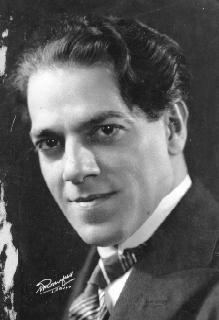 | ||
String Quartet No. 3 ("Quarteto de pipocas"—"Popcorn" Quartet) is the third of seventeen works in the medium by the Brazilian composer Heitor Villa-Lobos, and was written in 1916. A performance lasts approximately twenty-three minutes.
Contents
History
Villa-Lobos composed his Third Quartet in Rio de Janeiro in March 1916. It was first performed on 2 November 1919 at the Theatro Municipal, Rio de Janeiro, by a quartet consisting of Pery Machado and Mario Ronchini, violins, Orlando Frederico, viola, and Newton Pádua, cello. The first North American performance took place on 16 January 1933 in Hollywood, performed by Samuel Albert and Doris Cheney, violins, Raymond Menhennick, viola, and Lysbeth LeFevre, cello (Jones 1933). The UK premiere was given by the Stratton String Quartet (George Stratton and Carl Taylor, violins; Watson Forbes, viola; John Moore, cello) on 9 January 1934, at the Wigmore Hall, London (Scott 1934, 174).
Because of the persistent percussive pizzicato patter in the second, scherzo movement, Villa-Lobos gave it the onomatopoeic, alliterative nickname "pipocas e potócas" (popcorn and tall tales), and this nickname is also applied to the entire quartet (Salles 2012, 88).
Analysis
The quartet, like all but the first of Villa-Lobos's works in the medium, consists of four movements:
- Allegro non troppo
- Molto Vivo
- Molto Adagio
- Allegro con fuoco
The opening of the first movement establishes a motive that recurs throughout the quartet in various transformations. At first, it recalls Prokofiev or Shostakovich, but later is given a context more suggestive of Ravel. The generally pentatonic melodic contours and long ostinatos initially tend toward monotony and inexpressiveness, but the ostinatos give way to a more plastic and lively treatment later in the movement. The second movement, Molto vivo, was listed in the programme for the premiere performance as "Scherzo satirico". Like the first movement, it is largely dependent on ostinatos, but in place of pentatonic melodies its thematic material utilizes the whole-tone scale. The third, slow movement, transforms the leitmotif into something resembling the theme of the piano piece Lenda do caboclo. The finale restates motives from all of the preceding parts, especially the main subject of the first movement, to produce a cyclic formal closure. However, despite this motivic cross-referencing, Villa-Lobos does not take advantage of the possibilities this offers for the kind of rich thematic development found in the Viennese classical masters (Tarasti 2009, 231–32).
Lisa Peppercorn (1991, 36) agrees with Tarasti's assessment, stating that Villa-Lobos rarely develops his musical ideas, but instead merely uses them as stereotyped, repeated formulas, in contrast to composers who relate their different themes, or have evolved them all from a common germ cell. With specific reference to the Third Quartet, she finds the thematic material is "clearly stated and is obviously suitable for development", but that Villa-Lobos fails to provide this development, which is essential to sonata form, instead letting the themes "take their course through the instruments exactly as they were originally conceived" (Peppercorn 1991, 39). Paulo Salles (2012, 85–86), however, contests this view. According to his analysis, both of the main themes of the first movement are taken from the same germ motive, which permeates not only the exposition but the entire first movement of the quartet, "in a process of continuous variation", and compares this high thematic density to the music of Joseph Haydn.
Villa-Lobos emphasizes the beginning of the recapitulation in the first movement with a sudden change of register of the accompanying triplets. At bar 153 (rehearsal-number 12), over an augmentation of the first cyclic theme, he introduces for the first time a figuration evoking the call of a Brazilian bird called sabiá da mata (English name: cocoa thrush). This call occurs in several of Villa-Lobos's later works, including the Fourth and Eighth String Quartets, but most notably in the second movement (Dança: Martelo) of the Bachianas Brasileiras No. 5, where text by Manuel Bandeira names the bird. This is the only moment in this quartet where there is any hint of nationalism (Salles 2012, 87).
Discography
Chronological, by date of recording.
